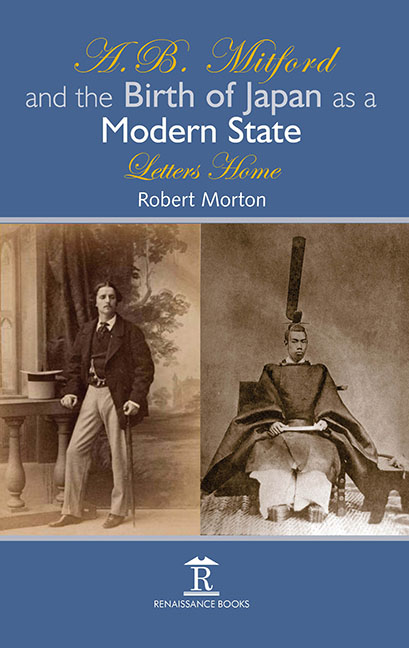Book contents
- Frontmatter
- Contents
- Foreword
- Preface
- List of Plates
- 1 Yokohama: October – December 1866
- 2 Edo: October 1866 – May 1867
- 3 The Shogun: January – April 1867
- 4 An Adventurous Journey: July – August 1867
- 5 The Birth of the New Japan: October 1867 – March 1868
- 6 Kyoto: February – March 1868
- 7 Osaka: March – July 1868
- 8 Tokyo: August 1868 – January 1870
- 9 After Japan: 1870 – 1906
- 10 The Return: February – March 1906
- 11 The Legacy: 1906 –
- Notes
- Bibliography
- Acknowledgements
- Index
1 - Yokohama: October – December 1866
Published online by Cambridge University Press: 30 April 2022
- Frontmatter
- Contents
- Foreword
- Preface
- List of Plates
- 1 Yokohama: October – December 1866
- 2 Edo: October 1866 – May 1867
- 3 The Shogun: January – April 1867
- 4 An Adventurous Journey: July – August 1867
- 5 The Birth of the New Japan: October 1867 – March 1868
- 6 Kyoto: February – March 1868
- 7 Osaka: March – July 1868
- 8 Tokyo: August 1868 – January 1870
- 9 After Japan: 1870 – 1906
- 10 The Return: February – March 1906
- 11 The Legacy: 1906 –
- Notes
- Bibliography
- Acknowledgements
- Index
Summary
FOR SOMEONE AS prone to sea-sickness as Mitford, any sea voyage was an ordeal. ‘I thank my stars,’ he once told his father, ‘that you did not send me to sea when I was a youngster.’ He was an unlucky sailor, always seeming to encounter storms, and his voyage from Shanghai to Yokohama was one of his worst, his ship, the P&O steamer Cadiz, hitting a typhoon head on: the force of the wind was so great that it blew the foam like a carpet spread over the waves.’
Even in calm weather, Mitford found the motion of boats uncomfortable, but in the extreme conditions of a typhoon, it became terrifying. The ships would take on water at a terrific rate, not just from waves, but from the sea seeping in through cracks created by the violent rocking and the shifting of the cargo. Crews would fight a desperate battle to prevent the fires going out in the engine room. If this happened, they lost power and therefore lost control of the ship, and then anything could happen.
Mitford was accompanied by his Chinese servant, Lin Fu, who he was bringing over from Beijing, and was travelling in a First-Class cabin. This made the journey expensive, but was necessary, not so much for comfort, as for keeping up his position. While the storm was raging, he was no doubt fervently wishing the Foreign Office had let him stay in China. Before his departure, he had written that he was ‘sorry and glad mixed’ to be leaving it; ‘sorry to leave China and Chinese – glad to leave Peking and its dust.’ Most Westerners found the annoyances of China far outweighed its pleasures, and Mitford wrote: ‘I believe I am the only person that ever liked it.’ Among its negatives was the ‘Beggar's Bridge,’ which Mitford had to pass every time he went out. Gathered there was a collection of the ‘most degraded specimens of humanity,’ which formed ‘the most loathsome and stinking exhibition that it ever was my fate to come across’. It was a sight Mitford thought would stay with him as ‘a nightmare’ for the rest of his life.
- Type
- Chapter
- Information
- A. B. Mitford and the Birth of Japan as a Modern StateLetters Home, pp. 1 - 26Publisher: Amsterdam University PressPrint publication year: 2017



